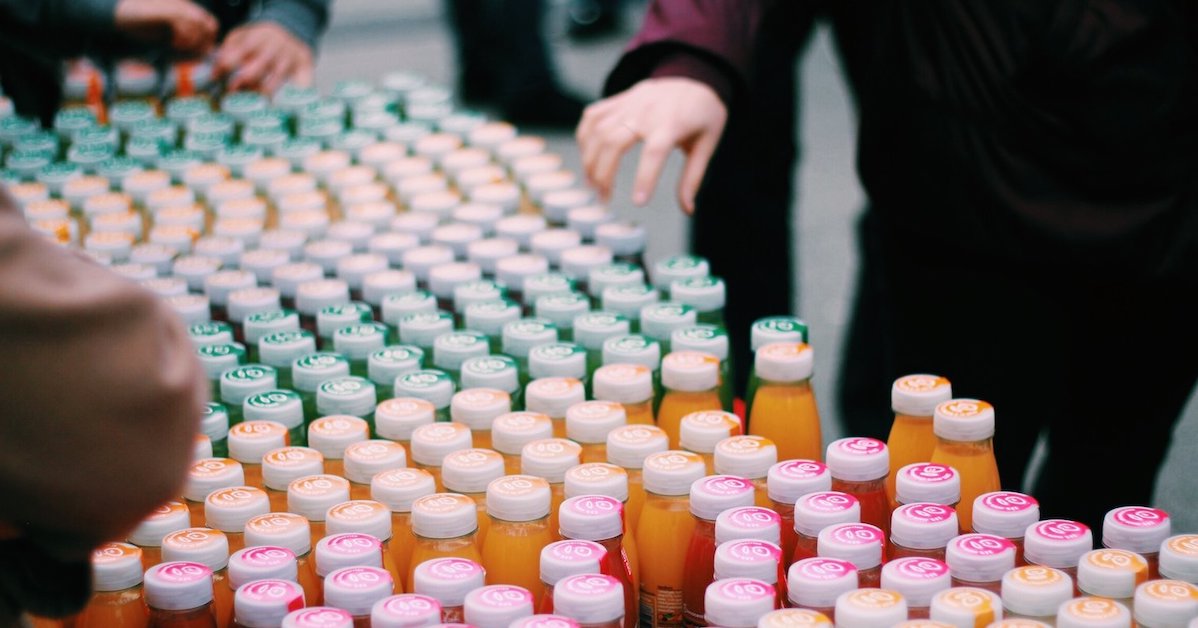Are you confused about whether you should do a juice cleanse 4x a year? Should you spend $8 a day on getting a cold pressed juice from a juicery or can you just buy a $6 one at the grocery story?
Juicing was all the rave a few years and some people still stand by it while others denounce it. So what is the deal? To juice or not to juice – that is the question. Well, let’s get into it!

On the plus side:
By doing a juice cleanse, you could discover hidden food intolerances to the main culprits like gluten, dairy, soy. Removing these foods for a short period of time and then adding them back to your diet can give you clues about what ails you.
Juicing can add vital nutrients into your system that you might not get from other sources. How many of us are really getting the recommended seven servings of fruits and veggies in the day? And since the produce we have now is less nutritious than it was 50 years ago we need more fruits and vegetables to have the same effect. Juicing can add those essential nutrients to our day when we otherwise might not get them.
On the down side:
On the flip side, juicing can cause a whole host of issues from blood sugar spikes, “fake” weight loss, slowed metabolism, lightheadedness, damage to your teeth, mood swings from cranky to depressed, loose stools and low energy to name just a few. Additionally, just as juices can add in nutrients, there are certain key nutrients like the Fat Soluble Vitamins A,D, E, and K that can’t be absorbed – even if they are in juice – without adequate fat in our systems. And finally, and perhaps most hotly debatable – juicing is not an effective “detox”. Let’s dive into a couple of these down sides of juicing a bit more.
Blood Sugar Spikes and Energy Crashes
Juicing can cause insulin to be produced at an even greater speed because there is no fiber in the juice to slow the production of insulin. Blood sugar spikes can cause a cascade effect including lethargy. Additionally, because fructose is filtered out through the liver, an excess of it can cause the liver to store it as fat which can lead to diabetes and put you at risk for heart disease.
“Fake” Weight Loss and Slower Metabolism
The weight loss you might experience on a juice cleanse is from loss of water weight and more alarmingly – loss of muscle – yikes! When you juice you are generally not getting any protein and protein is the building block of our muscles. When our bodies don’t have a protein source to use as fuel, it starts to use our hard earned gym muscles! Additionally, if that wasn’t enough, losing muscle mass can slow your metabolic rate, meaning that when you do introduce food again you could gain the weight back.
Juicing for Detox
The word detox is such a buzz word, but our livers and colons work on detoxing every day for us. There is a theory that consuming strictly juices will help your digestive system by giving it a break and it will help absorb the nutrients better. Although that’s a nice theory, it actually hasn’t been proven. What has been proven is that detoxing happens in two phases. Phase II is the part where juicing can really hinder our body’s natural ability to detox. In Phase II our liver takes all the toxins that is has broken down into water soluble molecules and it combines with certain amino acids, found in protein, in order to rid our body of those toxins. Without the proteins, our livers can’t detoxify well. If Phase II is impaired you can have free radicals stuck in your system causing all sorts of systemic inflammation. It’s for that reason that I would suggest doing a whole foods detox with elimination of processed foods to support your organs of elimination. In fact, I feel so strongly about that that I am developing a 15 day clean eating program to launch shortly.
5 Tips for Juicing
- Stick to the Basics – try to consume a balanced diet with protein, healthy fats and FIBER. If you feel like having the occasional juice – go for it but eat it alongside a healthy plate. That way you are still getting that boost of nutrients and your body gets the benefits of the protein and fats.
- Do it Safely – If you opt to do a juice cleanse – do it in a controlled setting, with a seasoned practitioner. Take note as to how it makes you feel and stop if it doesn’t agree with you. Just because something is deemed “healthy” by some doesn’t mean that it will work for you. You are an individual.
- Opt for Cold Pressed – When we talk about juicing we are talking about fresh, cold pressed, perishable juices not a glass of OJ or Apple Juice. A big source of hidden sugar is in the so-called “healthy” vegetable juices produced by major manufacturers. They add fruit juice to make them sweeter and taste better. This is very different from a cold pressed juice that’s made straight from fruits and veggies with no added sugar.
- Watch the Sugar – If you buy a cold pressed juice, check out the grams of sugar on the back of the label. 15 grams of sugar is actually a lot in one sitting. Try consuming this juice into two servings on different days.
- The 80/20 Rule – Look for juices that are 80% vegetables and 20% fruit. If you can find some that have lower glycemic fruits like berries – even better.
